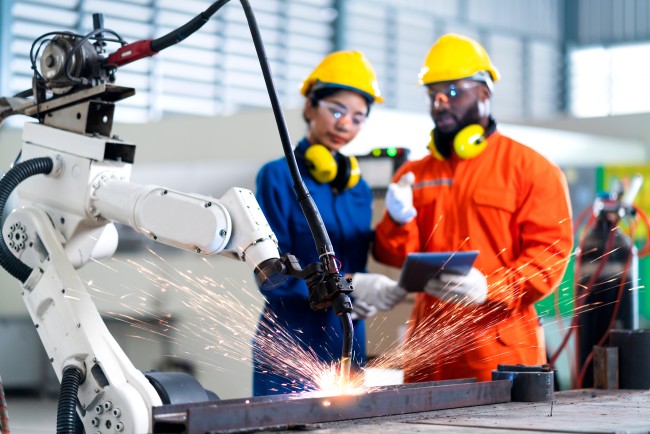
Manufacturing is a dusty, dirty business. A relic of the past. It’s not an industry you’d choose to go into.
Right?
Wrong. The manufacturing industry today looks nothing like it did in the 20th century. It’s cleaner, more productive, more innovative. You might as well call it something else entirely.
What’s responsible for the shift? Why is an entire generation of workers and a growing class of entrepreneurs envisioning a future in the manufacturing business?
These six trends bear some responsibility. Understand them and you’ll begin to understand why manufacturing is so exciting right now.
1. Augmented Reality Is Creeping Into the Factory
Augmented reality has become an important tool for high-tech manufacturers. Siemens leverages it to guide technicians through maintenance tasks.
Other manufacturers use it to identify assets and components, to transfer knowledge between experienced workers and newer technicians (a big deal amid a serious labor shortage), and improve remote communications between people in different parts of the factory and even at different facilities.
2. Precision Technology Gives New Meaning to “Exact Specifications”
If you haven’t been on a manufacturing floor in a while, you’d be forgiven for imagining that most workers use familiar tools like table saws and soldering irons to cut and shape material.
That’s…not how it works anymore. Today’s manufacturing equipment is far more complex and far more precise.
And that’s only going to become more true, thanks to a wave of consolidation-driven innovation surging through the space. Companies are growing fast and gaining the scale needed to develop the next generation of precision technology. It’s an exciting time for high-tolerance tech.
3. Renewables Allow Manufacturers to Go Low- or No-Carbon
Manufacturing is an energy-intensive business. Many big factories have their own captive power sources that ensure a steady supply of relatively cheap, reliable electricity.
Unfortunately, that electricity is often dirty. And even grid-connected factories are at the mercy of the local power generation mix, which in many places remains heavy on coal.
Forward-thinking manufacturers are saying “no more” to this carbon-drenched state of affairs. They’re investing in onsite and offsite solar and wind generation and battery storage. As the cost of these alternatives continues to decline, the business case for going low- or no-carbon will only get clearer.
4. Industrial IoT Makes Supply Chains and the Factory Floor Smarter
The Internet of Things (IoT) is the term we use to describe the billions of connected devices scattered throughout the built environment.
Manufacturers first deployed IoT sensors years ago to track assets moving through manufacturing facilities, warehouses, and supply chains.
Today, IIoT has an even bigger range of use cases in the factory, from preventive maintenance to real-time inventory leveling.
5. Factory Automation Is Rapidly Improving
The story of manufacturing is really the story of applied automation. The development of the assembly line way back in the early 20th century heralded the beginning of a century-long push to make human workers more productive, one that has only accelerated since the beginning of this century.
Sometime in the next 10 years, we’re likely to see the first “dark factory,” where at least some steps in the production cycle occur without direct human intervention.
This likelihood is often framed as bad news for workers, but that’s not at all clear. More complicated robots need more supervision, not to mention more maintenance and development know-how.
6. Middlemen Are Getting Squeezed
Direct-to-consumer manufacturing is a thing now, and it’s about time. Even as Amazon squeezes retail margins and perhaps takes liberties with seller IP, it’s creating a vast space for independent DTC makers to market and sell their wares to a product-hungry public.
We can think of this as a digital update to the independent retail model that kept city centers vibrant for decades during the 20th century.
It might not have the same salutary socioeconomic impact, but it could keep the manufacturing industry dynamic in the face of serious, systemic challenges like labor shortages in the developed world and energy availability in developing countries.
The Manufacturing Business Isn’t What It Used to Be
It’s true. The manufacturing business is nothing like it was. It’s not your parents’ or grandparents’ factory floor.
The term “factory” itself is fast losing meaning.
Not that we should expect the present state of manufacturing to persist for very long. The dramatic innovations of the past 30 years are just an opening act of sorts, a preview of what’s to come in a world where AI and low-carbon technology play far more central roles than they do today.
It’s exciting to think about what could be ahead for manufacturing. But the present is exciting enough too. As these trends play out, we’re in for a very productive decade ahead.
Also Read:
